► New Ferrari SF90 XX driven
► First-ever road-legal XX model
► 1016bhp, 0-62mph in 2.3sec, £673k+
It’s been almost 10 years since we last saw an entry into Ferrari’s elite XX series of supercars, but the introduction of the SF90 XX Stradale and Spider should make up for that. Pushing over 1000bhp from its plug-in hybrid powertrain, the SF90 XX is the first road-legal XX model and, although it remains a limited edition, build numbers add up to more than all of the existing XX examples put together – 799 for the Stradale and 599 for the Spider.
With prices for the Stradale starting at £673k, it’s not hard to surmise the possible benefits to Ferrari of drastically opening up the XX order books, but it begs the question of whether the XX programme has been watered down. Indeed, customers for this latest model won’t get the most exclusive track testing benefits of previous XX variants and much of the exclusivity has also been removed, so what exactly does the SF90 XX provide?
More power, but not by much
The regular SF90 makes a healthy 986bhp from its 4.0-litre twin turbo V8 and triple e-motor set-up and while the XX has the same configuration, power jumps to 1016bhp. On the internal combustion side, this is thanks to improved efficiency in the internal combustion engine via polishing the inlet and exhaust ducts, as well as increasing the compression ratio with new pistons and specific machining of the combustion chamber.
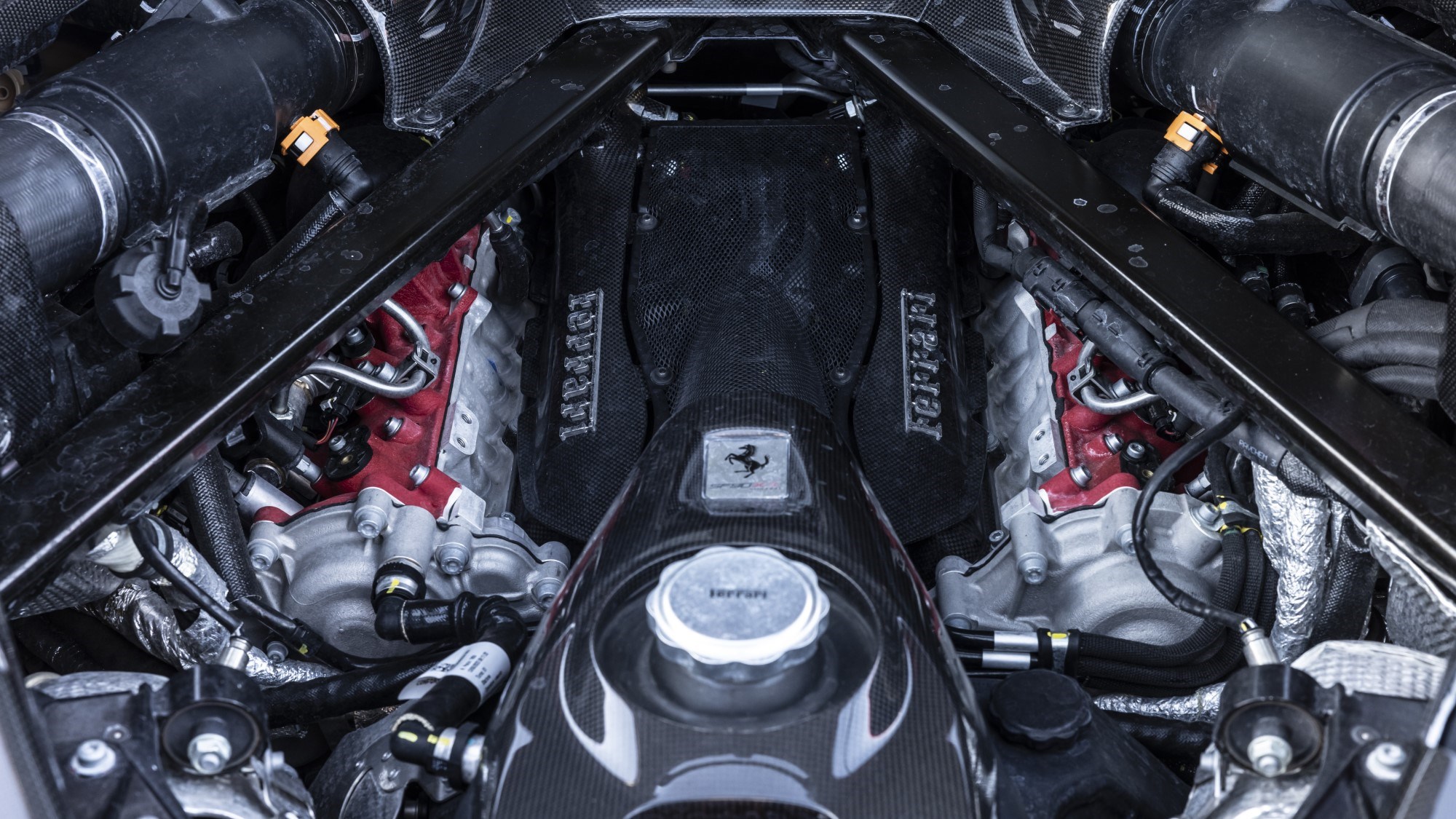
As for the electric motors, Ferrari has added something called extra boost vehicle dynamics logic. Sounds about as exciting as cold porridge, but the result is extra power in short bursts when the eManettino (essentially the drive mode selector for the powertrain) is in its Qualifying setting.
At any given time, the driver has a maximum of 30 boosts (number remaining is displayed on the dash) and these are automatically deployed at the optimum moment for reducing lap times (0.25 seconds around Fiorano, we’re told). Ferrari reckons it’s good for at least one lap of the Nordschleife, plus more at regular-sized circuits.
In addition, changes to the shift logic of the eight-speed dual-clutch gearbox have been made and mirror those from the Daytona SP3 – the aim being to create more intense and aurally distinctive gearshifts. The latter involves additional work to the exhaust system, where Ferrari has optimised the hot tube. Now, the revised intake plenum sits closer to the cabin’s bulkhead while the resonator is positioned nearer to the engine.
More aero, more pace
Clearly, starting with a 1000bhp base car doesn’t leave a lot of headroom when it comes to improving straight line performance, so like Porsche has done with the 911 GT3 RS, the SF90 XX’s biggest improvements come in the aero department. In short, the XX delivers double the amount of downforce as the regular SF90, thus yielding much faster laptimes.
Ferrari has done this through a number of methods, the most obvious bit being the ginormous fixed rear wing. At 155mph, it can generate 315kg of downforce over the rear end thus creating a significant improvement in high-speed stability and grip. And while the wing itself might be fixed, the shut-off gurney panel below can rise and fall to create two difference aerodynamic profiles – namely low drag and high downforce.
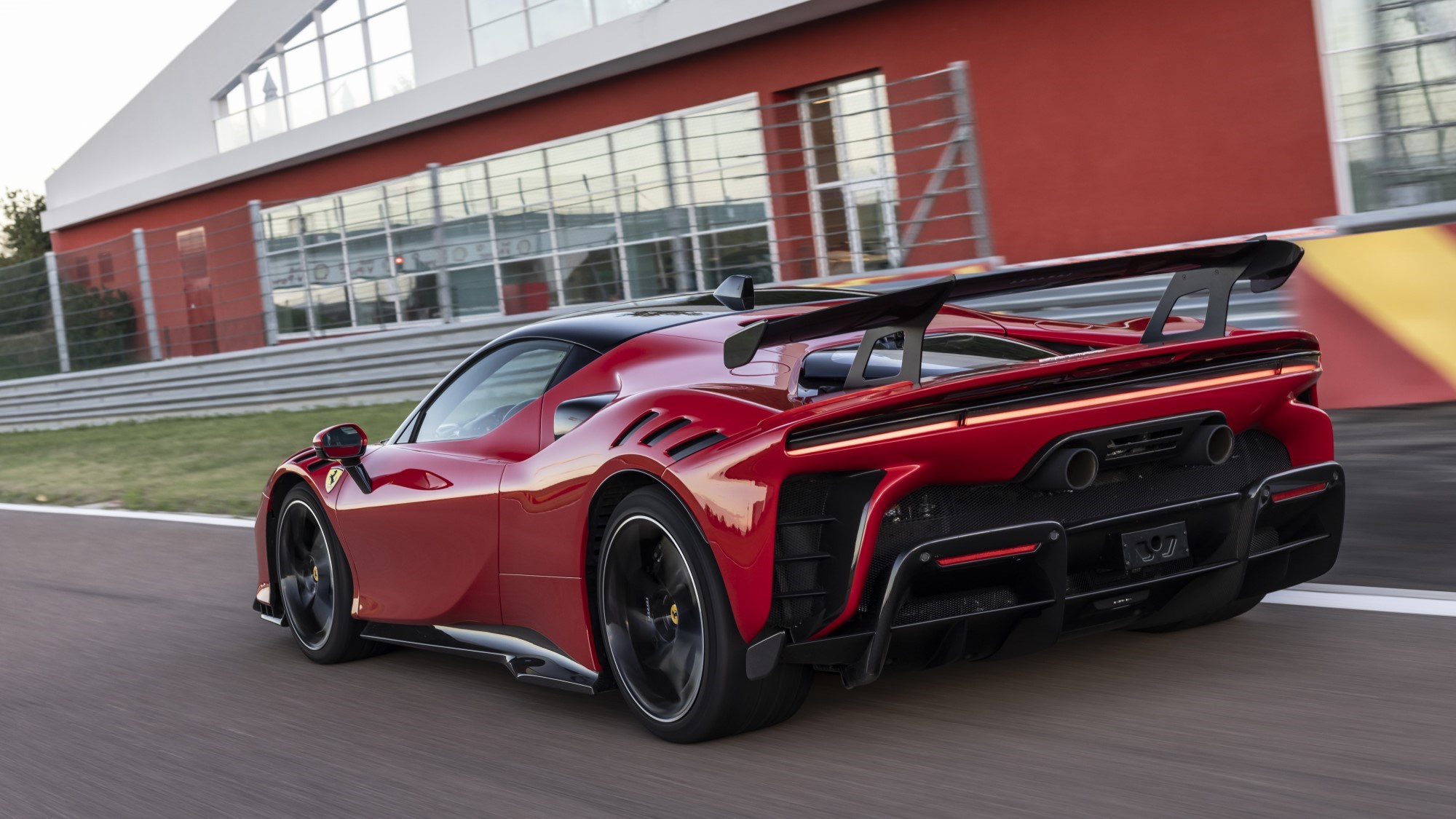
Further changes around the rear of the car includes reworking the rear diffuser and designed the trailing edge around the expansion volume to keep the car’s wake nice and compact. Moving towards the front, the underside has been tweaked to maximise air extraction and then, at the front bumper, the side louvres have been redesigned to reduce back pressure.
There’s also a new set of louvres on the wheelarch (these providing improved dynamic extraction from the wheel housing) that work with the two S-Ducts in the centre of the bonnet to help deliver 20% more front downforce. It’s the same story with the front splitter which is wider than the SF90 Stradale’s and works in tandem with the redesigned underbody. All in, there’s 325kg of front downforce at max speed.
Also noteworthy is how Ferrari has borrowed clever techniques used on the new Nürburgring 24H winning 296 GT3. For example, by reversing the layout of the medium temperature radiator – responsible for cooling electrical components – they’ve been able to increase efficiency and enclose part of the car’s underbody that, in turn, creates more effective surfaces that are used to generate front downforce.
How does the SF90 XX drive?
Well, we need to caveat this section by saying that – despite the SF90 XX being the first road-legal XX model – we only drove it on Ferrari’s Fiorano testing circuit. What’s more, our time in the car was brief and we probably could have done with more to appreciate the changes on an already complex car.
What we could figure out almost immediately, however, was that the XX is appreciably quicker in a straight line than the SF90 – which in itself is quite something. The electric boost may only – in the grand scheme of things – be having a relatively minor effect on the numbers but, as is the way with electric assisted propulsion, it hits home where your brain is expecting a let up in the power delivery. On the way out of corners, the SF90 XX squats down and puts space between itself and the conquered apex like little else.
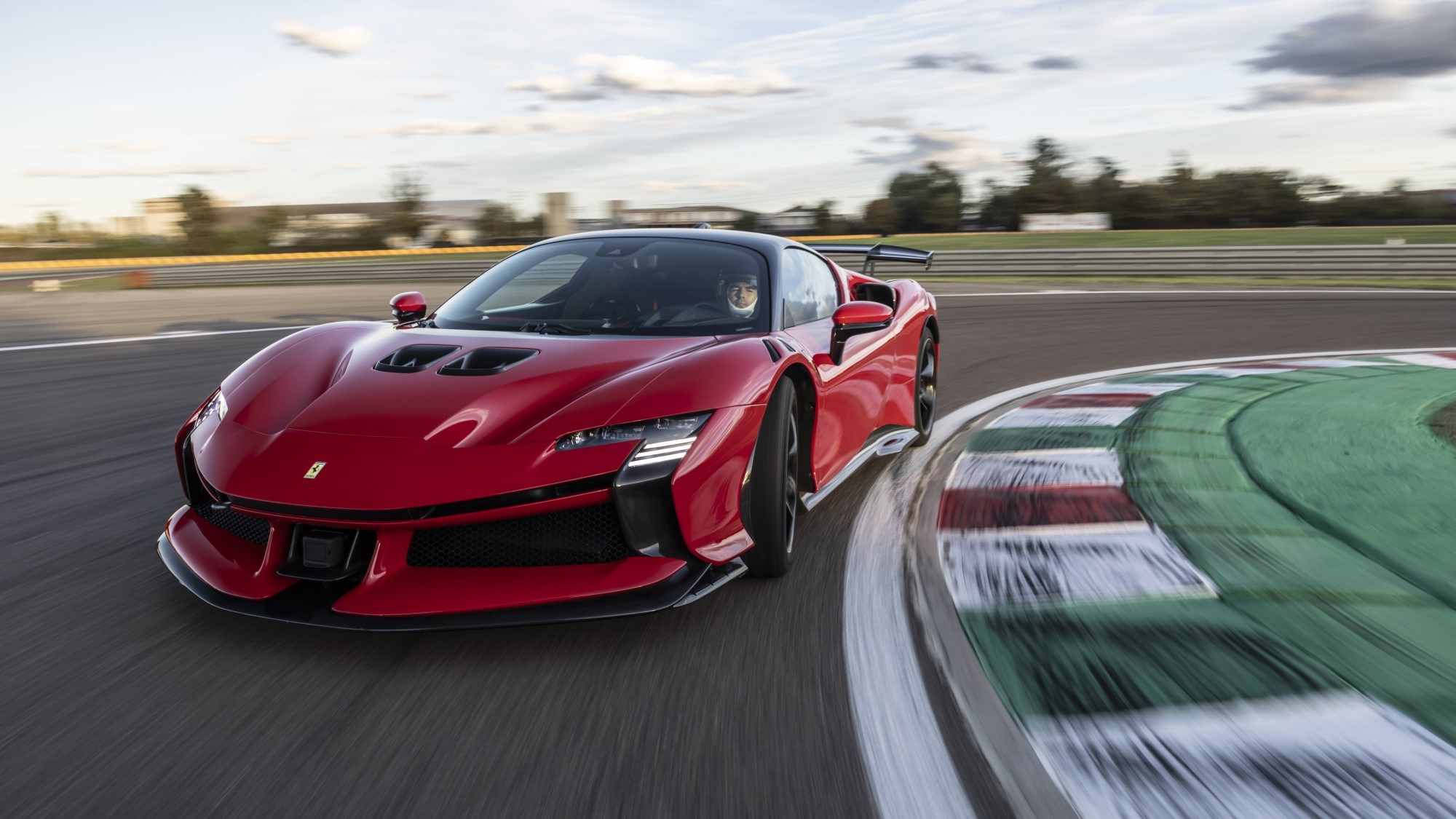
The figures only tell half the story, yet they do give an impression as to the levels of performance we’re dealing with. 0-62mph takes just 2.3 seconds, 0-124mph is over in 6.7 seconds (quicker than a Bugatti Veyron). Top speed is a heady 199mph, although note this is slower than the regular SF90 due to the XX’s aero tweaks.
Gearchanges are crisp and hit home with a well-judged punch, while the sound – so far as we could tell with a helmet on – is again an improvement on the experience you’d get in a regular SF90. Ferrari’s worked some magic to counter the effects of the gasoline particulate filter on recent models and it shows with a less filtered, more gravelly feel to the soundtrack.
There’s no doubting the XX’s ability in a straight line, but it’s in the corners where it really needs to show an improvement over the SF90 – a car that, while incredibly capable, can be more difficult to enjoy and extract the most out of than other recent Ferrari supercars.
It’s important to note here that, curiously, the SF90 XX offers the same suspension choice as the regular SF90 – namely Assetto Fiorano passive dampers or the semi-active MagneRide system. Ferrari’s chief development driver Raffaele di Simone explains that while he usually prefers the latter on most tracks, Fiorano’s relatively smooth and flat surface means the passive dampers are his setup of choice.
During our time on track, we only tried the MagneRide system and were struck with the amount of body roll, both lateral and longitudinal, despite Ferrari claiming a 10% reduction in roll rates vs the regular SF90. Coming out of medium speed corners, the front end would often go unnervingly light as the car’s weight pitched rearwards under power. Ultimately, this is likely a compromise to allow the car to work both on road and track, but it does feel at odds with the rest of the car.
Look beyond that however and there’s stunning pace to be explored in the right hands. eManettino in qualifying, Manettino in Race or CT OFF and the SF90 XX devours the Fiorano track like nothing we’ve driven with number plates.
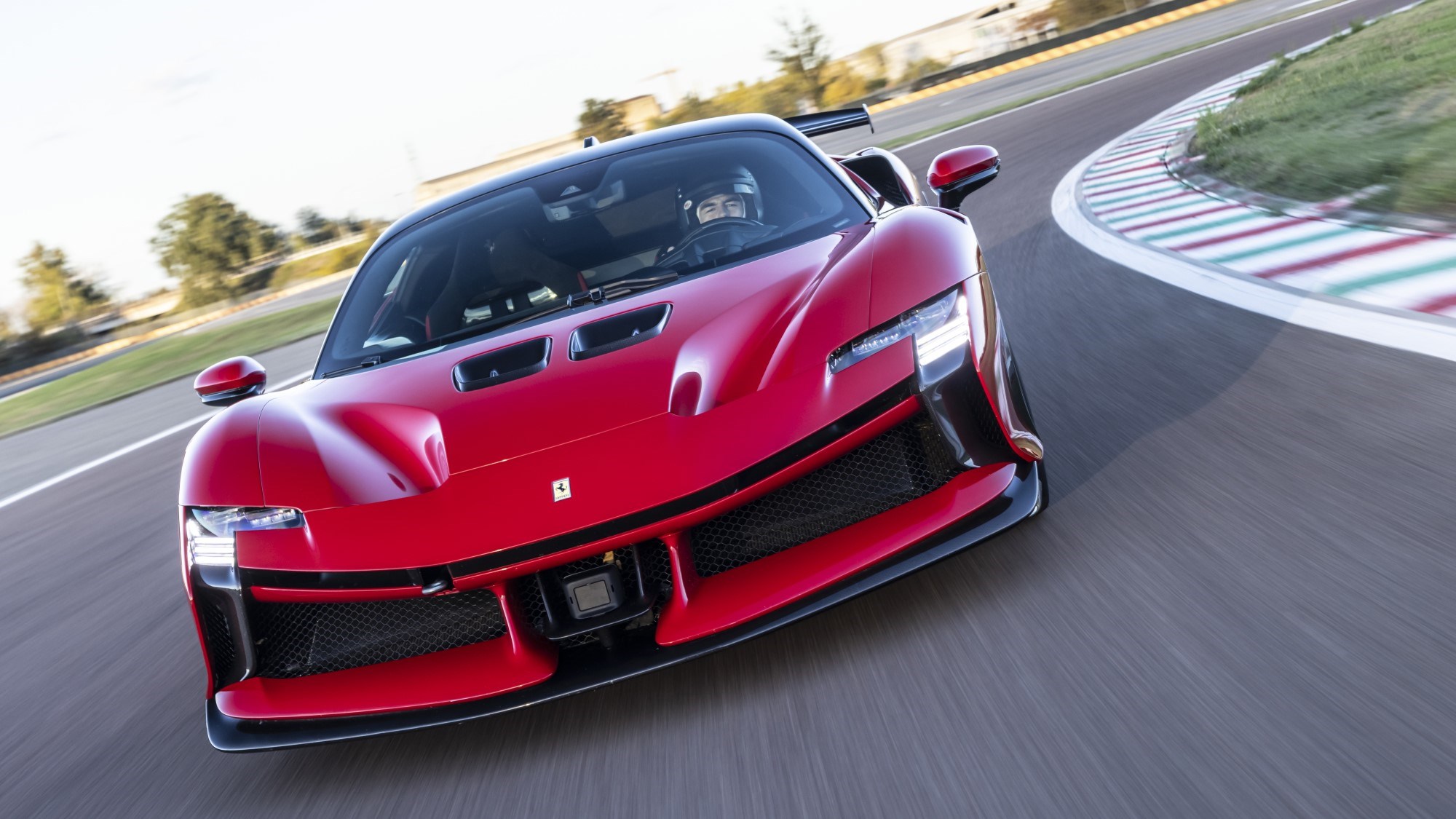
Learn to work with the weight transfer and grip levels are huge, while the front-limited balance gives you confidence to push into corners. Transitions to oversteer are fairly easy to gather up, but be warned, if you’re impatient and push the car too much on entry you’ll lose bags of lap time. When it comes to extracting ultimate pace, this is a car that insists on being driven the way it wants, rather than the driver.
Ferrari Dynamic Enhancer 2.0 makes its debut, while the ABS EVO controller from the 296 GTB also features. The latter worked phenomenally well in the 296, delivering incredible feel in the braking system (especially for one harvesting energy), yet – while impressive – it doesn’t appear to have transferred quite as well into the SF90 XX.
Steering feel is so-so – not unusual for a Ferrari – yet communication through the chassis is excellent. Meanwhile, electric torque vectoring on the front axle is clearly effective and helps to haul 1.66 tonnes of Ferrari (dry weight) out of corners, yet unlike the Lamborghini Revuelto, the system doesn’t stabilise the car under braking.
Verdict
As a tool for turning up, lapping a given circuit as fast as possible and then driving home again all on the same tyres and tank of fuel, the SF90 XX is borderline unbeatable. If you’ve got the requisite skills behind the wheel, the car will deliver and – largely thanks to the upgraded aero and extra boost – there’s an appreciable difference in performance to the regular SF90. Coming through some of the faster corners at Fiorano, it really does feel like a softer, more comfortable GT3 racing car.
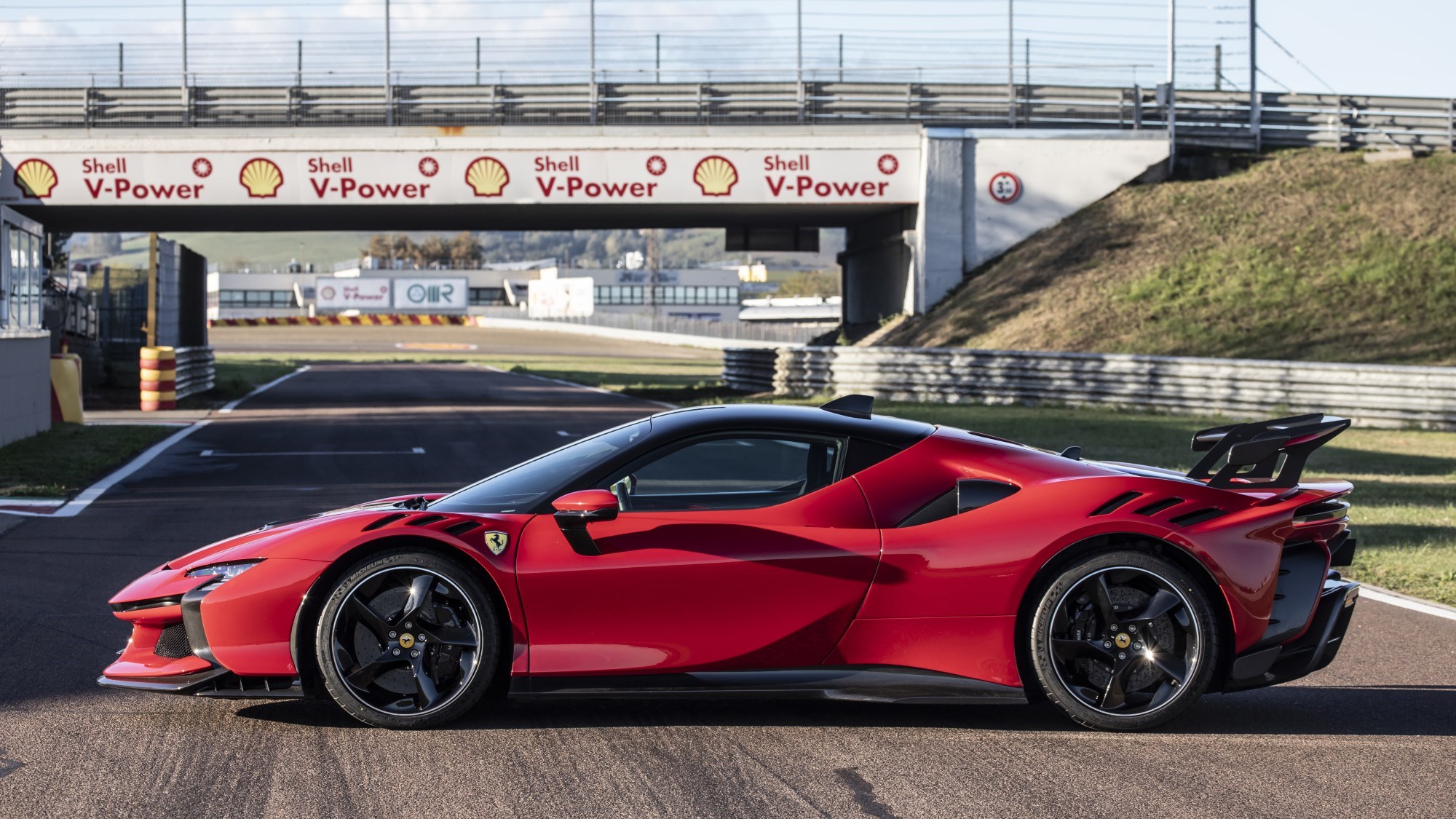
However, while it may be Ferrari’s fastest road-legal car, from our brief drive it doesn’t appear to be its most likeable or engaging. The level of driver skill needed to realise the additional performance benefits over a 296 GTB – let alone a regular SF90 – is sky-high and maintaining that level in the XX requires a strict adherence to a style of driving that doesn’t feel as flexible or enjoyable as Maranello’s finest models.
How it performs on road could change our opinion and the compliance of the chassis does suggest that compromises have been made to improve on-road performance. But until then the SF90 XX will have to settle for the title of Ferrari’s fastest, but not necessarily its best road car entry.